Investigate the enigmatic world of biblical harems to unveil their intricate roles in power, culture, and politics, and how they resonate today.
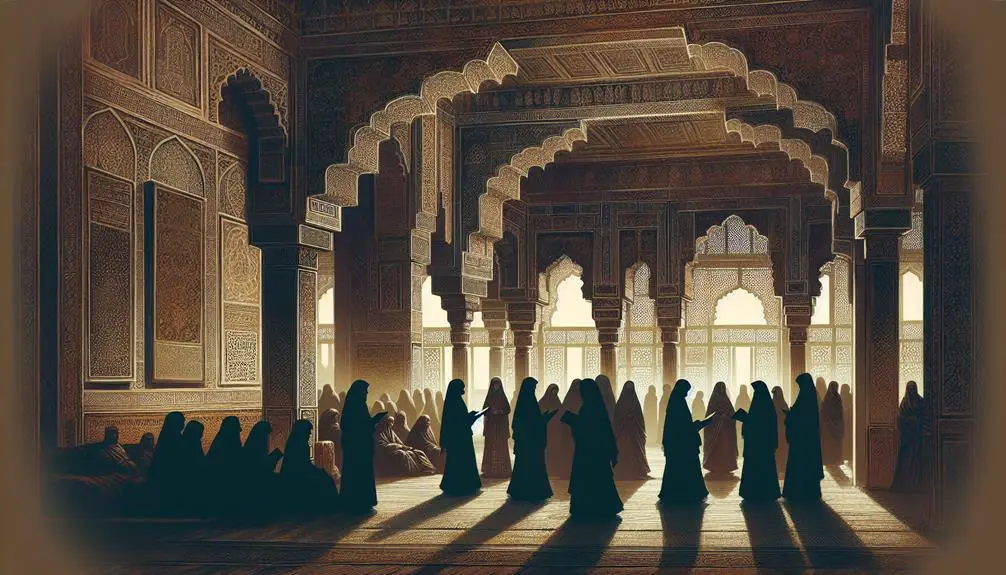
What Is a Harem in the Bible
As you peel back the layers of ancient texts, the concept of a harem in the Bible emerges not just as a collection of concubines but as a complex institution with profound implications. Situated within the palatial walls of kings and prophets, these harems were more than mere quarters for women; they were centers of power, intrigue, and sometimes, rebellion.
By understanding the composition, hierarchy, and roles within these secluded spaces, you'll uncover the nuanced interplay between religion, culture, and politics in biblical times. This exploration promises to shed light on how these ancient practices resonate with or diverge from modern interpretations and debates, inviting you to question and contemplate the echoes of the past in today's world.
Key Takeaways
- Harems in the Bible served as private quarters for wives, concubines, and servants, symbolizing power and wealth.
- They played critical roles in governance, diplomacy, and economic management within royal households.
- Women within harems navigated complex power dynamics, influencing domestic and state affairs.
- Biblical harems reflect cultural and religious norms of the time, offering insights into ancient gender hierarchies and societal structures.
Defining Biblical Harem
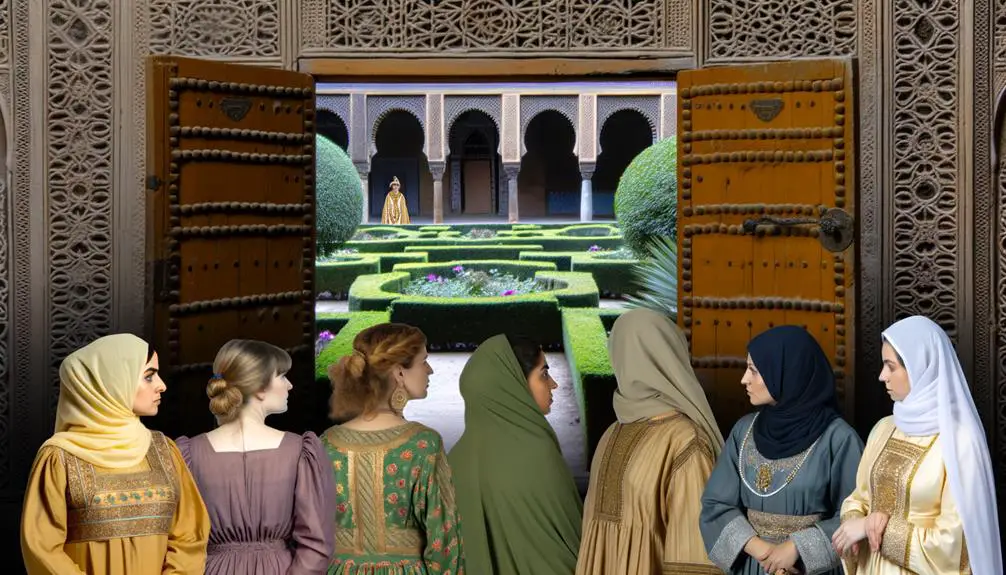
Within the context of the Bible, a harem typically refers to the private quarters reserved exclusively for the wives, concubines, and female servants of a polygamous household, illustrating a complex social and familial structure deeply rooted in ancient Near Eastern cultures. The origins of the harem can be traced back to these societies, where they served not only as living spaces but also as a means to consolidate power and wealth through strategic marriages and alliances. This structure was integral to the social and political fabric of the times, reflecting the prevailing norms and values.
From an ethical viewpoint, the concept of the harem raises numerous questions. The Bible itself presents a nuanced perspective on polygamy and the treatment of women within these arrangements. On one hand, the existence of harems is acknowledged and, in some cases, detailed accounts of the lives and dynamics within these quarters offer insights into the complexities of such relationships. On the other hand, the ethical implications of harems, including issues of consent, autonomy, and the value of women, are subjects of ongoing scholarly debate.
The biblical depiction of harems, therefore, isn't merely historical or descriptive but invites a deeper exploration of the ethical standards of the time. It provides a lens through which to examine how ancient societies navigated complex interpersonal relationships and the ethical considerations surrounding them. As you delve into the notion of harems within the biblical narrative, it becomes evident that these structures were reflective of broader societal values and norms, offering a rich field for ethical and cultural analysis.
Historical Context
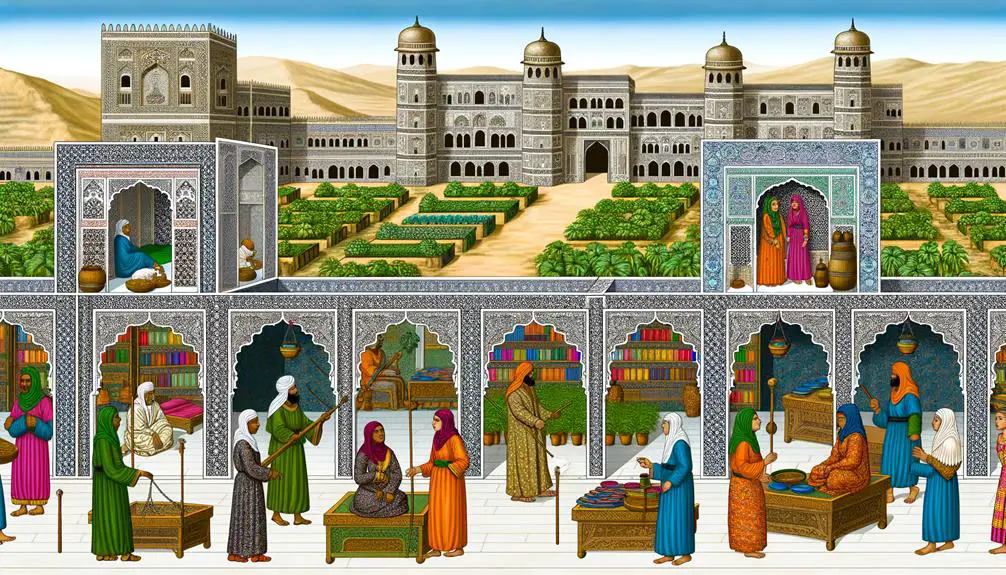
Exploring the historical context of harems within biblical narratives reveals the intricate ways these institutions mirrored and influenced the socio-political landscapes of ancient Near Eastern societies. You'll find that harems weren't merely about the personal whims of rulers; they were deeply embedded within the societal norms and power structures of their time.
Archaeological evidence plays a pivotal role in understanding the historical realities behind the biblical accounts. Through excavations and artifacts, you gain insights into how harems functioned not just as living quarters for wives and concubines, but as centers of political and economic activity. These findings challenge and enrich our understanding of biblical texts, offering a more nuanced view of ancient societies.
The societal norms surrounding harems were complex and varied significantly across different cultures and periods. The establishment of a harem was often a reflection of a ruler's wealth and power, serving as a symbol of political alliances and social status. This practice was deeply intertwined with the fabric of ancient Near Eastern societies, influencing laws, customs, and even religious beliefs.
Aspect |
Influence |
Evidence |
|---|---|---|
Societal Norms |
Shaped by harems |
Laws and customs reflecting harem roles |
Archaeological |
Confirms biblical text |
Artifacts and structures |
Socio-Political |
Harems as power symbols |
Alliances and status reflected in harems |
Role in Royal Households
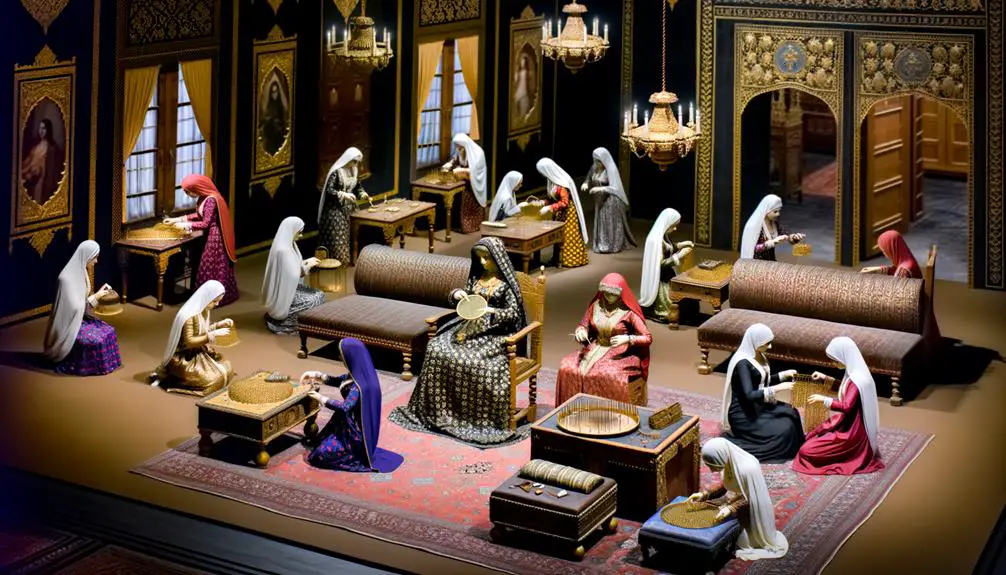
In examining the role of the harem within royal households, you must consider its dual aspects of functionality and purpose, alongside the nuanced positions of women within these confines.
The harem's structure and operations reveal much about the socio-political dynamics of ancient royal courts, highlighting the intricate balance between private life and public authority.
Furthermore, the status and influence of women residing in harems underscore their potential to affect both domestic affairs and broader state policies.
Harem Functionality and Purpose
A harem, as found in royal households, primarily served as a complex social system where the king's wives, concubines, and female relatives resided, playing pivotal roles in political alliances and progeny continuity.
It's essential to delve into the ethical considerations surrounding harems, as they reflect broader societal norms and values.
The economic impacts can't be overlooked, as maintaining such an elaborate system required substantial resources, influencing the royal treasury's management and allocation.
Harems weren't merely secluded spaces but were integral to the functioning of royal courts, affecting decisions on governance and diplomacy.
Their existence underscores the intricate relationship between power, wealth, and human relationships in shaping historical narratives.
Women's Status and Influence
Shifting focus to the women within these harems, their status and influence significantly shaped the dynamics of royal households. Contrary to traditional gender norms, which often relegated women to the background, harems offered a complex platform where women could exert power and influence, albeit within a confined spectrum.
Feminist perspectives shed light on this nuanced role, highlighting how these women navigated through patriarchal structures to assert their agency. They weren't merely passive figures but played active roles in political, social, and economic realms. Their influence, while circumscribed by the male-dominated hierarchy, challenges simplistic views of female subjugation in ancient societies, offering a richer understanding of gender dynamics in biblical times.
Composition and Hierarchy
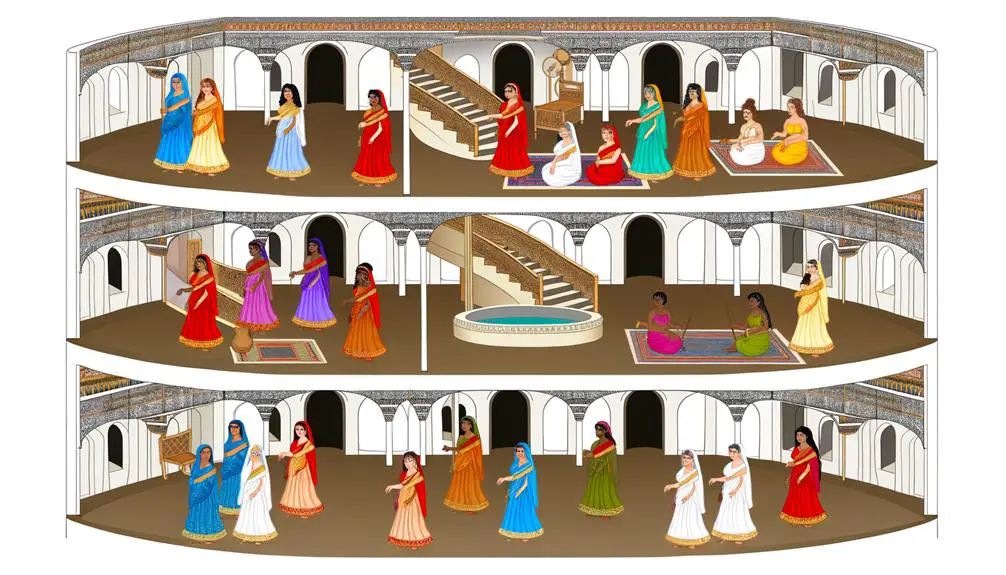
As you explore the composition and hierarchy within biblical harems, it's essential to consider the varied roles and statuses of its members.
Analyzing the structure dynamics reveals how power and influence were distributed among key figures.
This examination sheds light on the intricate social fabric that defined these complex institutions.
Members' Roles and Status
Within biblical harems, each member held a distinct role and status, forming a complex hierarchy that shaped daily life and governance. This structure was deeply intertwined with gender roles and marital practices, reflecting broader societal norms and expectations.
- Queen or Chief Consort: Often the primary wife, holding significant influence over internal harem affairs and sometimes state matters.
- Secondary Wives: Married to the king but with lesser status, their roles were primarily to bear children and manage their own households within the harem.
- Concubines: Women of lower social status, their primary function was to provide additional heirs, and they held limited rights.
- Servants and Eunuchs: Tasked with the daily operation of the harem, including its security, they played crucial roles in maintaining the order and facilitating communication within the harem hierarchy.
Harem Structure Dynamics
The composition and hierarchy of biblical harems were meticulously structured, reflecting the social and political order of the time. Architectural design played a crucial role, as the physical layout of spaces within the harem was designed to mirror the social hierarchy, ensuring that the most privileged members had access to the most luxurious quarters. Clothing norms further emphasized the status distinctions within the harem.
Tier |
Role |
Signifiers |
|---|---|---|
1 |
Queen |
Lavish clothing, private chambers |
2 |
Concubines |
Distinctive attire, shared quarters |
3 |
Servants |
Uniforms, communal areas |
This table illustrates the hierarchical structure within the harem, highlighting how architectural design and clothing norms were instrumental in maintaining the social order.
Key Figures' Influence
Exploring the impact of key figures on the composition and hierarchy of biblical harems reveals that their authority and decisions significantly shaped the social structure within these secluded spaces. These leaders not only influenced who belonged to the harem but also established its internal order, directly affecting the dynamics of polygamy debates and marriage norms.
- Patriarchs dictated marriage norms, often marrying multiple women to fulfill biblical mandates or political alliances.
- Consorts could influence their status and their children's through personal relationships with the patriarch.
- Servants and slaves, typically at the bottom, had roles defined by the key figures above them.
- Visitors, such as prophets or messengers, occasionally disrupted the hierarchy, sparking debates on polygamy and ethics within these structures.
This hierarchy and composition were pivotal in shaping the discourse around biblical harems.
Prominent Biblical Examples
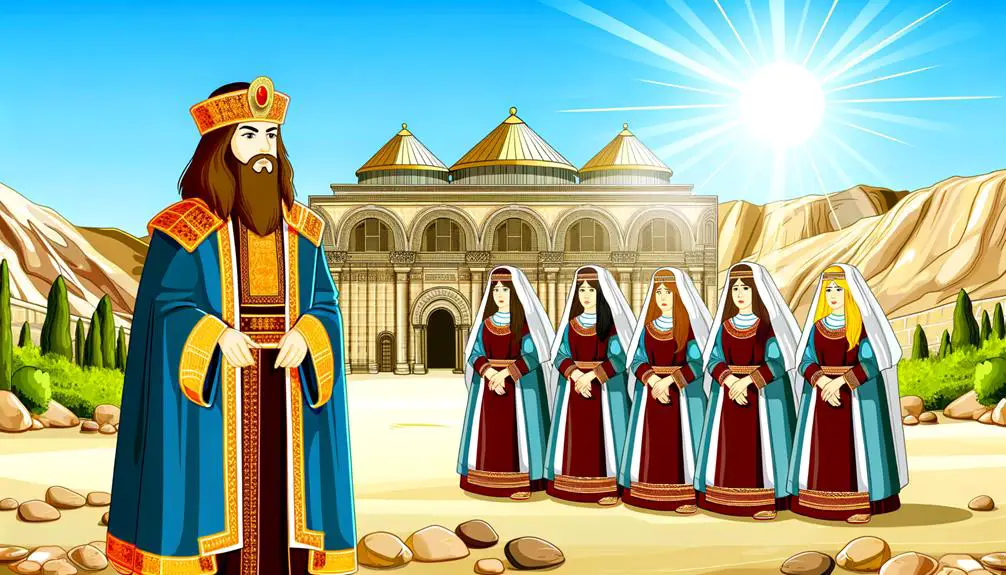
Delving into biblical narratives, one encounters several instances where harems played significant roles in the lives of key figures. These harems aren't merely a backdrop for tales of ancient opulence but carry deep genealogical significance and are often connected with architectural mentions that highlight their importance within societal structures of the time.
For instance, King Solomon's harem is perhaps the most well-documented, showcasing not only his wealth and power but also the political and genealogical strategies behind the accumulation of such a harem. The Bible details Solomon's 700 wives and 300 concubines, emphasizing the breadth of his connections and alliances through marriage. This example underscores the role harems played in consolidating wealth, power, and influence, while also hinting at the architectural grandeur required to house such a large number of people, as seen in the descriptions of Solomon's palace and other royal edifices.
Moreover, the story of Abraham and Hagar introduces a different aspect of harems, where they intersect with divine promises and genealogical lineage. Hagar, initially a member of Abraham's harem, becomes central to the narrative of Ishmael's birth and the subsequent implications for Abrahamic religions. Here, the harem's role extends beyond political maneuvering to touch upon foundational religious and genealogical narratives.
These examples illustrate the multifaceted roles harems played in biblical times, serving not only as symbols of wealth and power but also as pivotal elements in the unfolding of genealogical and theological narratives. Through examining these instances, one gains insight into the complex social, political, and religious fabrics of the ancient world.
Cultural and Religious Implications
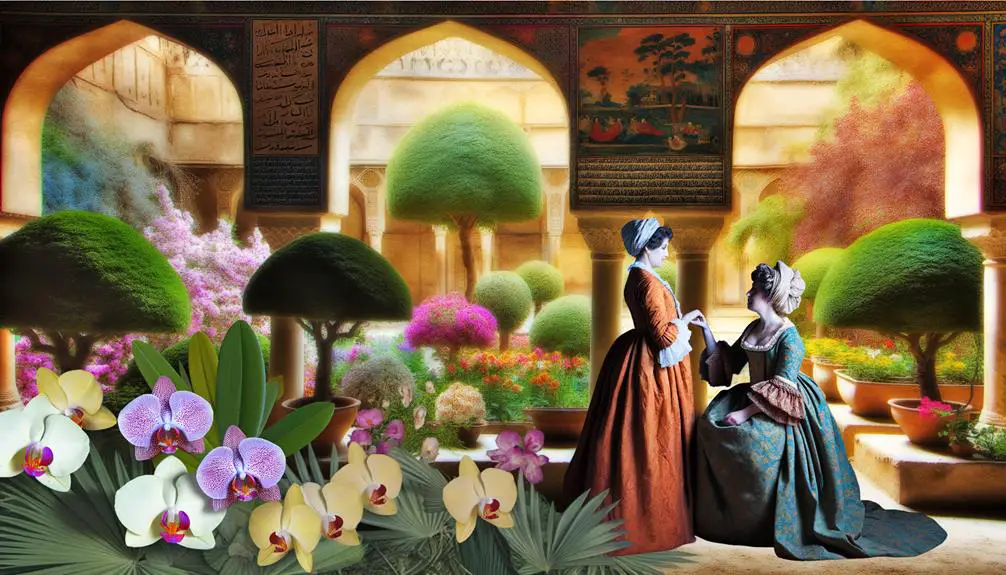
Understanding harems within biblical contexts reveals profound cultural and religious implications, shaping societal norms and theological interpretations across generations. The concept of harems, primarily viewed through ancient texts, offers a unique lens into the gender norms and social structures of the time.
- Gender Norms: Harems often underscored a pronounced gender hierarchy, where men held dominion over multiple women, defining roles and expectations. This structure mirrored broader societal norms, where women's value and agency were significantly tied to their relationships with men, often relegating them to secondary roles within both public and private spheres.
- Social Mobility: For some women, becoming part of a harem could mean a chance at social mobility, albeit limited. It provided a form of security and status otherwise unattainable in patriarchal societies. This aspect of harems illustrates the complex interplay between power dynamics and gender, where social advancement came at the cost of personal autonomy.
- Theological Interpretations: The existence and treatment of harems in biblical narratives have influenced theological discussions and interpretations. Debates around the morality, ethicality, and divine sanction of such institutions reflect broader inquiries into the nature of divine will versus human social constructs.
- Societal Norms: Lastly, the biblical depiction of harems has contributed to the perpetuation of certain societal norms, embedding the idea of male dominance and female subservience into cultural and religious teachings. This has had lasting effects on gender roles and expectations, influencing contemporary discussions on gender equality and rights.
Modern Interpretations and Debates

Reflecting on the historical and theological perspectives, it's crucial to examine how contemporary debates and interpretations challenge or reinforce traditional views on harems within biblical contexts. The concept of harems, often tied to notions of power and gender roles, has evolved, yet its analysis remains pertinent to understanding societal dynamics both past and present.
Contemporary debates pivot around the interpretation of harems beyond their literal historical existence to metaphorical significance today. Scholars argue that the biblical depiction of harems mirrors broader issues of gender roles and power dynamics that persist in modern societies. This parallel draws attention to how women, akin to those in historical harems, are often subject to systemic power structures that limit their agency and voice.
Moreover, the discussion extends to the ethical implications of interpreting ancient texts in light of contemporary values. Critics caution against anachronistic readings that may distort the original context, advocating for a nuanced understanding that respects historical specificity while acknowledging its impact on present-day gender roles.
Contemporary parallels further enrich this debate by highlighting how modern forms of 'harems' might manifest in societal structures that perpetuate gender inequality and exploitation. This comparison urges a reevaluation of traditional interpretations, suggesting that the biblical narrative of harems can offer insights into ongoing struggles for gender equality and justice.
Frequently Asked Questions
How Did the Concept of a Harem Influence the Social Status and Legal Rights of Women Outside the Royal Family in Biblical Times?
The concept of a harem had significant economic implications and influenced political alliances in biblical times. It didn't just affect those within the royal circle; it also shaped the social status and legal rights of women outside the royal family.
You'd see women's roles and rights within society directly impacted by these dynamics, as harems were intertwined with the economic and political framework, affecting women's positions and opportunities across the board.
Are There Any Documented Reactions or Perspectives From Women Who Lived in Biblical Harems Regarding Their Experiences and Feelings About Their Situation?
You're diving into a sea of silence when searching for women's voices from harems, aiming to gauge their experiences and feelings.
Historical accuracy is tough to pin down, as direct testimonies are scarce. However, analyzing texts and records with a scholarly, analytical lens might offer glimpses into their lives.
Though it's challenging, understanding these perspectives is crucial for a comprehensive view of historical women's experiences and social dynamics.
How Did the Existence of Harems Impact the Relationships Between Different Religious Communities or Sects Within the Biblical Era?
You're exploring how harems influenced interfaith marriages and political alliances between religious communities in the biblical era. These marriages often served as strategic tools, fostering alliances and peace among differing sects. Through political marriages, harems played a pivotal role in shaping inter-community relations, promoting or hindering unity.
Analyzing these dynamics reveals the complex interplay of religion, politics, and social structures in ancient societies, highlighting the multifaceted impact of harems.
In What Ways Did the Concept of a Harem From the Bible Influence Early Christian and Jewish Teachings or Practices Regarding Marriage and Concubinage?
As you delve into early Christian and Jewish teachings, it's clear that 'actions speak louder than words' when it comes to marriage and concubinage.
These religions, influenced by biblical narratives, navigated the complex web of monogamy advocacy and concubinage ethics. They sought to define relationships within a moral and spiritual framework, often contrasting with the broader acceptance of harems.
This nuanced approach helped shape distinct practices and beliefs regarding marital fidelity.
Can Archaeological Evidence or Non-Biblical Texts From the Same Period Provide Additional Insights Into the Daily Life and Personal Dynamics Within a Biblical Harem?
You'd find that archaeological methodologies and textual criticism can indeed offer deeper insights into the lives within ancient harems.
By examining artifacts, structures, and non-biblical texts dated to similar periods, you'll uncover nuances about daily routines, social hierarchies, and interpersonal relationships.
This approach allows you to piece together a more detailed picture, moving beyond traditional narratives to understand the complexities of personal dynamics in these historical settings.
Conclusion
In sum, the biblical harem, a tapestry woven with complex threads of power, culture, and religion, served as a cornerstone in royal households. Its layered hierarchy and diverse composition underscore the nuanced roles it played within ancient societies.
Through examining prominent examples, we've unearthed the multifaceted implications these harems held, prompting ongoing debates and reinterpretations. As history's lens focuses, the harem's legacy in biblical narratives continues to challenge and enlighten our understanding of the past.

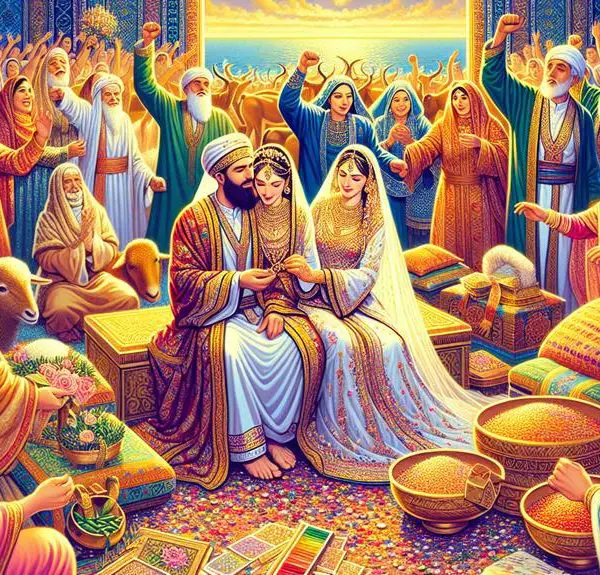
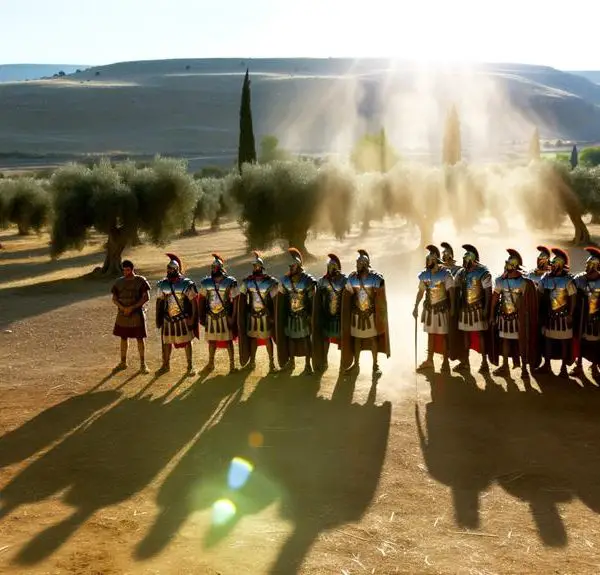
Sign up